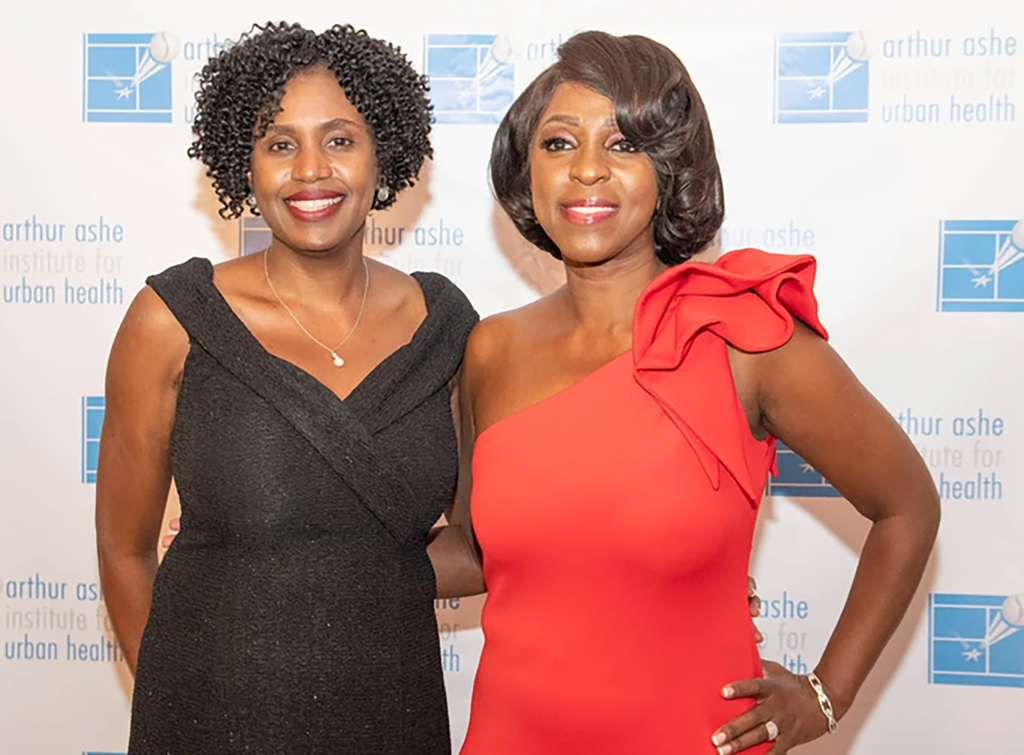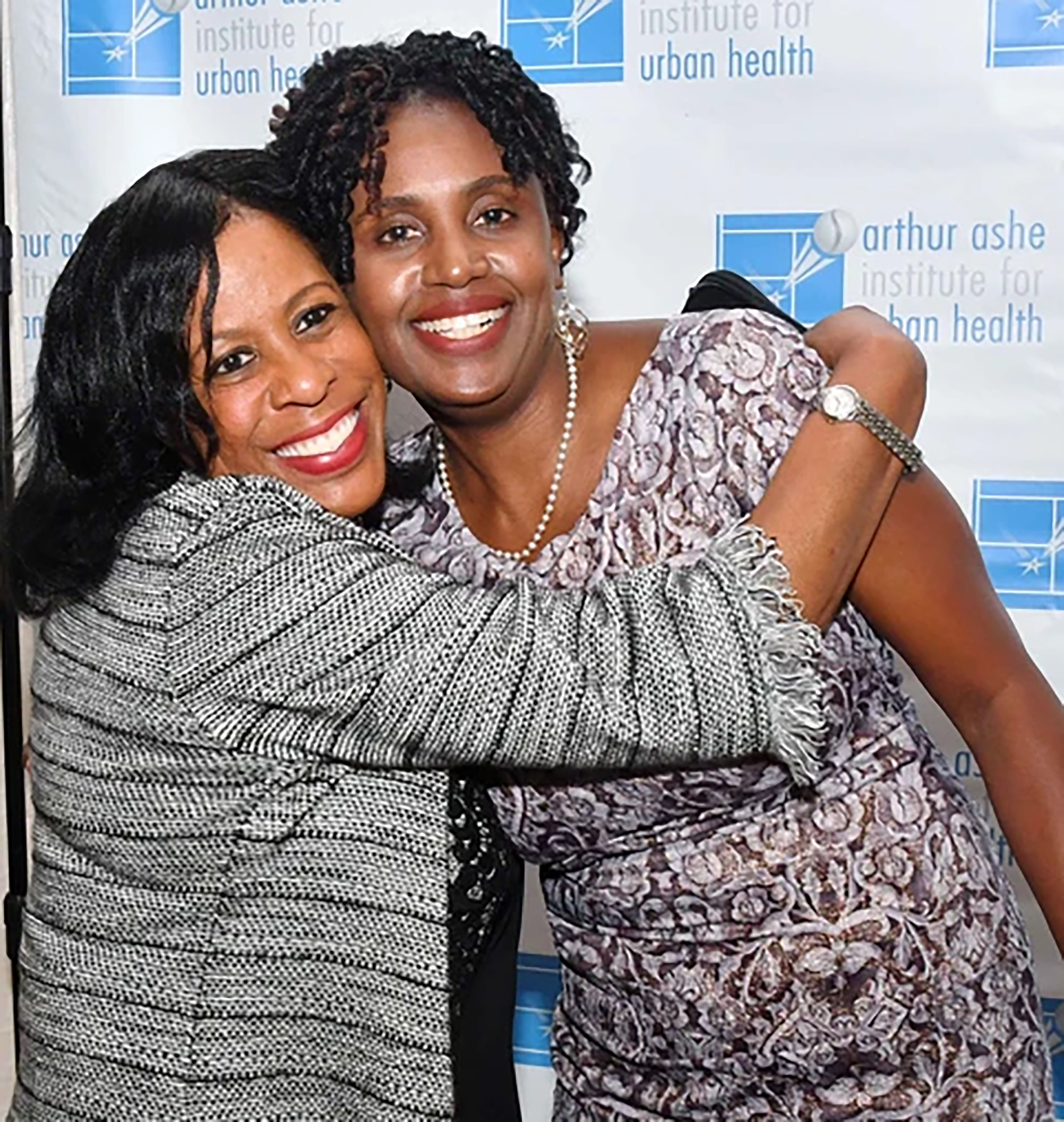There is no denying that Black people suffer unnecessarily when it comes to taking care of their health. The reluctance to go to the doctor costs untold lives and reduces life expectancy dramatically when compared to our white counterparts.
If you add the complexity of not getting sound medical advice when Black people do visit the doctor, then it’s understood why an alternative was needed.
Dr. Marilyn Fraser is the Chief Executive Officer at the Arthur Ashe Institute for Urban Health, a Research Associate Professor in both the Department of Medicine and the School of Public Health at the SUNY Downstate Health Sciences University, and the co-Director of the Brooklyn Health Disparities Center.
The Arthur Ashe Institute for Urban Health utilizes a model of community health empowerment and engagement to promote health equity and social justice through strategic partnerships, innovative community-based health promotion, research programs, and the preparation of a more diverse and inclusive workforce of health professionals.
Arthur Robert Ashe Jr. (July 10, 1943 – February 6, 1993) was a Black professional tennis player who won three Grand Slam singles titles. He started to play tennis at six years of age. He was the first Black player selected to the US Davis Cup team, and the only Black man ever to win the singles title at Wimbledon, the US Open, and the Australian Open. He retired in 1980.
Dr. Fraser began working with the organization right after medical school and rose to the rank of CEO in the last several years, and now leads the mission to change the Black community’s relationship with the medical profession.

“We’re working hard to get Black people to take the necessary tests they need to detect and check for health issues when they can,” Fraser said. “What we found is that when we would go out to talk to the community about health issues, they would not ask questions until we left. So we knew they were listening, they just didn’t trust the process and therefore didn’t use what we had in place.”
Dr. Fraser used an old concept of meeting the people where they are. Her team designed a plan to train barbers and hair salons on how to work with their customers to get the tests they needed in order to save lives. Early detection is the best way to reduce health risks in any community.
“Our very first curriculum was a program that taught hairstylists ways to help deliver breast health messages. We then tracked those who were exposed to the training to see if there was a change in behavior,” Fraser explained.
The program was met with so much success that barbers and hair salons all over the New York City area reached out to the Institute to join in bringing awareness to their customers about the various options they can choose to test themselves for numerous kinds of illnesses.
The idea seems simple but is quite difficult at the same time. How do you get people in the community to trust the medical profession so that people live longer? The salons and barbers that joined the movement know that if they don’t have customers, they cannot stay in business.
“The barbers and hair salons working with us know we can’t really pay them for what they’re doing, but they realize that the work of changing health outcomes in the Black community is so needed that they do it. We’re seeing amazing results from doing this much-needed work,” Fraser said.
And she’s right. A female who went to get her hair done at one of the salons that teach breast detection awareness went home to practice what she learned about herself. She found a lump on her breast and went to the doctor to see if her suspicions were correct.
It turns out she did have breast cancer. Because she found the lump so early, she was able to have the proper treatment to remove the lump and made a full recovery — a true success for the Institute the hair salon was involved with and the person whose life was saved.
“We had heard of several people who were able to save their own lives based on the information they received,” Fraser continued. “We even had one of our staff check his own situation and found out he had prostate cancer.”
During one of the training sessions, a member of the Arthur Ashe staff started to pay attention as one of the teachers was explaining the symptoms of prostate cancer. He realized he had seven of the eight symptoms and decided that he better get checked. The checkup revealed that he did, in fact, have prostate cancer. Proof that awareness, plus early detection can save lives.
Today, the Arthur Ashe Institute continues to work to drive awareness and donations with its 2022 Sports Ball fundraiser. The 28th annual Black Tie and Sneaker Gala will be held in New York City and will honor those who have impacted their respective areas of concentration with great citizenship and leadership throughout the year.
The event will be held on October 20, 2022, and is open to anyone who would like to register to attend the event.
“We use the event to communicate our mission, to fundraise, and to celebrate those who work in the light of what Arthur Ashe set out to do when he created the organization,” Fraser said. “We hope to continue doing the amazing work he started so we can continue to change lives.”
The Institute, Dr. Fraser, and the rest of her team are doing exactly what Ashe would have wanted, changing lives one person at a time.
For more information about the Gala visit: https://www.arthurasheinstitute.org/


